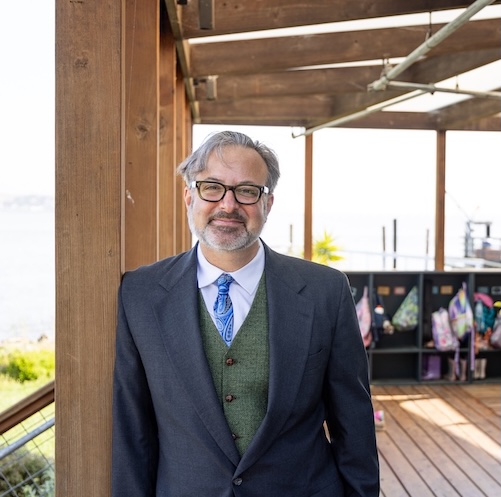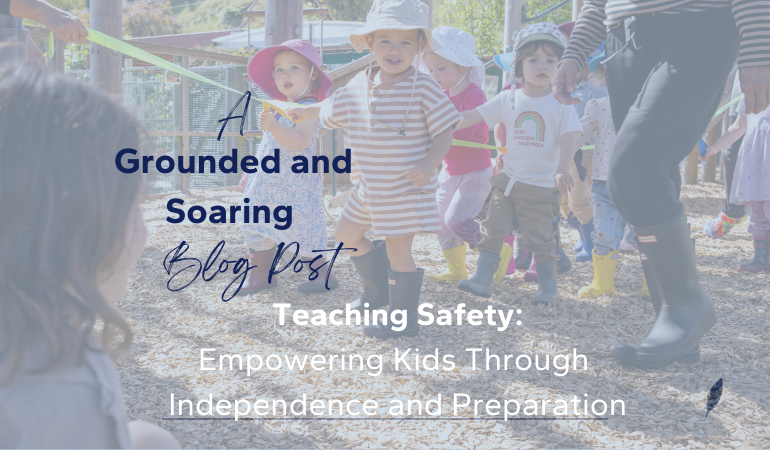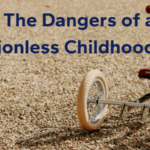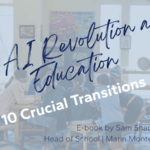You wouldn’t think an unplanned evacuation would set the stage for calm and grace, but that is precisely what happened at our school in December when a 7.0 earthquake spawned a series of frightening tsunami warnings.
While the waves of uncertainty loomed, our community responded with calm, precision, and preparedness. Guides led children in songs as they climbed to higher ground, staff coordinated swiftly with local emergency services, and students—from toddlers to teens—demonstrated remarkable resilience and determination.
Moments like these remind us that safety is not just about following protocols; it’s about nurturing a culture of trust, preparation, and independence. As a Montessori school, we deeply believe in the capacity of children to rise to meet challenges when they are given the tools and trust to do so.
But safety is also a shared responsibility. It requires collaboration among parents, educators, and students themselves. To support this partnership, we’ve developed Montessori-aligned safety tips for every developmental stage, designed to empower children while ensuring they feel secure and prepared.
Toddler and Primary (18 months – 5 years): Building Habits and Awareness
- Model Safe Behaviors: Montessori principles emphasize learning through observation. Demonstrate safe habits, like holding hands near roads, and explain why they matter: “We hold hands to stay safe.”
- Teach Key Information Playfully: Use rhymes or songs to help children memorize their full name and a parent’s phone number. This foundational knowledge provides security and confidence.
- Normalize Seeking Help: Encourage children to ask trusted adults for assistance if they feel uncertain. Reassure them that seeking help is always a good choice.
Lower Elementary (1st – 3rd Grade): Cultivating Confidence and Routine
- Establish Predictable Routines: Consistent drop-off and pick-up practices create a sense of security and reduce anxiety.
- Practice Asking for Help: Role-play scenarios where children might feel lost or uncertain. Teach them to approach trusted adults with confidence: “I need help finding my mom or dad.”
- Introduce Emergency Preparedness: Without overwhelming them, help children identify safe landmarks or trusted neighbors where they can seek help in an emergency.
Upper Elementary (4th – 6th Grade): Encouraging Independence with Boundaries
- Empower Decision-Making: Teach children how to identify safe places, such as a library or neighbor’s house, and discuss how to decide when to use these options.
- Navigate Without Technology: While many children this age don’t carry cell phones, teach them to recognize public phones, approach trusted adults, or borrow a phone if needed.
- Reinforce Emotional Regulation: Help children practice staying calm and problem-solving in stressful situations through role-playing.
Junior High (7th – 9th Grade): Balancing Freedom and Responsibility
- Commit to Communication: Teach students the importance of sharing plans, checking in regularly, and adhering to agreed-upon schedules.
- Prepare for Tech-Free Emergencies: Ensure students know how to use school communication tools, access public resources like phones, and navigate situations without relying solely on technology.
- Peer Responsibility: Encourage students to look out for one another, emphasizing the role of collective responsibility. A buddy system during outings reinforces this principle.
Reaffirming Our Commitment to Safety
At Marin Montessori School, our commitment to safety is unwavering, which is why we are always learning and improving to ensure our systems and practices meet the highest standards of care and preparedness. From our youngest toddlers to our Junior High students, we continually refine our systems, practice emergency responses, and empower children to meet challenges with confidence.

As Head of School, Sam is responsible for ensuring that Marin Montessori flourishes and that the School’s mission is brought to life each and every day.





